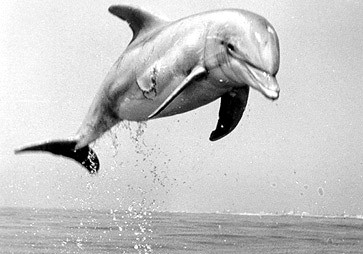Aquanauts and Sealab
In 1964 the first Sealab was established. A specially designed steel chamber anchored at the bottom of the ocean, Sealab provided a scientific center from which divers, or aquanauts, could work and study the ocean for extended periods of time. As part of the U.S. Navy's Man in the Sea program, three Sealab experiments were conducted. Sealab I was the first of the Navy's underwater habitats to be submerged. It was lowered 193 feet into the waters off Bermuda. A huge hose connected the Sealab aquanauts with the world above the water.
The Sealabs were submerged to great depths beneath the surface of the ocean, where living conditions were different than on land. For instance, normal air could not be inhaled safely. The aquanauts had to breathe a mixture of gases. Helium was the main ingredient of the Sealab atmosphere, and the aquanauts end up sounding like chattering chipmunks during their stay underwater. All three of the Sealabs had stoves, refrigerators, and sinks. A large hose brought fresh water, telephone and television connections to the scientists, oceanographers, doctors, engineers, and photographers living in Sealab. Snacks and treats were sent down the hose to the Sealab crews from family members daily to insure that the underwater capsules felt like home.
The aquanauts of Sealab I fed and photographed fish and placed measuring devices on the ocean floor. They spent six hours a day working on the ocean floor. The aquanauts completed tasks in a week that normally required a year with conventional surface divers.
The Sealab II experiment lasted a year, and the habitat was larger then the Sealab I capsule. One of the most complex tasks undertaken by Sealab II scientists was the installation of an undersea weather station. And, instead of using a hose to provide the aquanauts with all of their supplies from the surface, the Navy sometimes used a trained porpoise named Tuffy. Tuffy was trained by the Navy to respond to a special buzzer. He did an excellent job bringing the aquanauts mail, tools, and even bottles of soda. Sealab II also experimented with the retrieval and repair of wreckage and equipment on the ocean bottom.

Living under the sea also allowed the Navy to harvest food and fuel in the ocean depths. The Man in the Sea program lost its sponsorship when, during a routine transfer to Sealab III, an aquanaut was killed from carbon monoxide poisoning caused by faulty equipment. This tragedy, combined with the success of astronauts in the space program, eventually resulted in the cancellation of Sealab.



